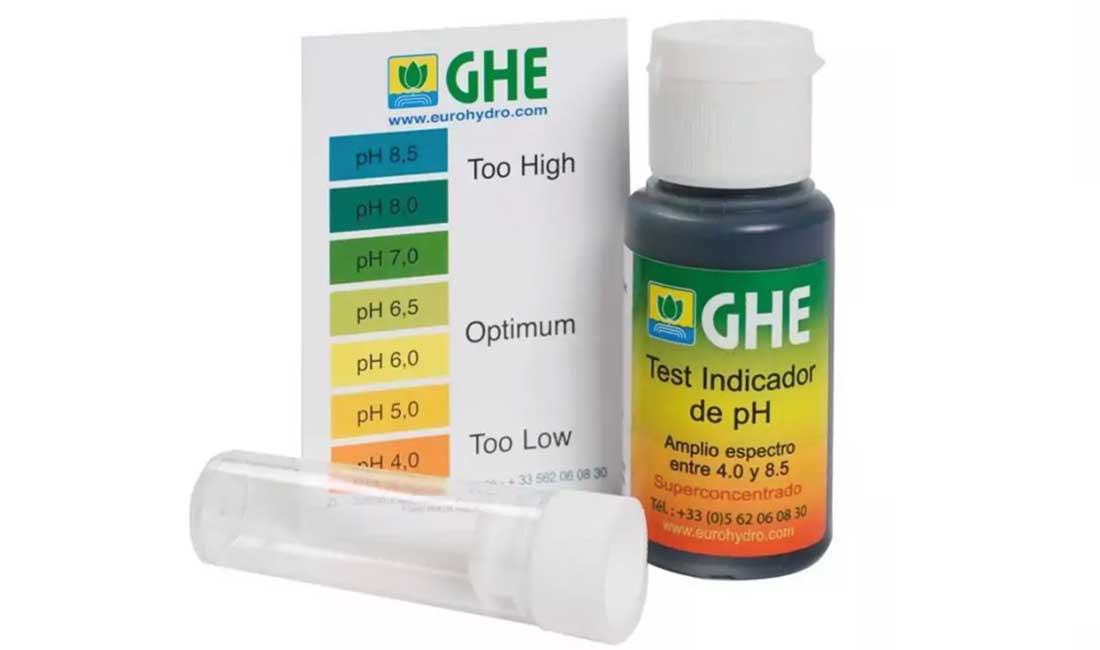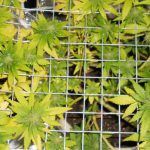Mastering PH and EC in marijuana growing
Today we are going to talk about two fundamental parameters in the marijuana cultivation, PH and EC, acronyms of hydrogen potential and electroconductivity. To reach good results in a crop without the control of both is very complicated, and in most cases, it depends on having naturally optimal growing conditions. No worries, here you will be guided to the easy mastering of the Ph and the Ec in marijuana growing.
PH and EC control
The control of PH and EC is the main base to get happy plants, whatever substrate you are using it. So why many soil growers don’t pay attention to it, usually because they don’t know the benefits of giving the plant what it really needs, at the moment it needs it. If these two basic concepts are learned, Ph and Ec, the outcomes will be greatly improved, mainly by a much higher yield and also by an amazing quality, but also the plants will give much fewer problems during their life cycle.
Controlling pH and EC is a basic growing technique. Analog and digital methods can be used to control the pH, while only digital meters are available to control the EC.
An analogue pH meter is a reagent, basically a compound, it produces a reaction on contact with water and shows a result based on a colour code. The best known meter of this style is the litmus paper, which is literally a paper impregnated with Tornasol, a compound obtained from plants such as Chrozophora tinctoria.
In our online store you can find an analogue PH meter based on litmus, it is developed by the Terra Aquatica (General Hydroponics) brand, it is presented in liquid form, and it comes with a colour chart to interpret the value.
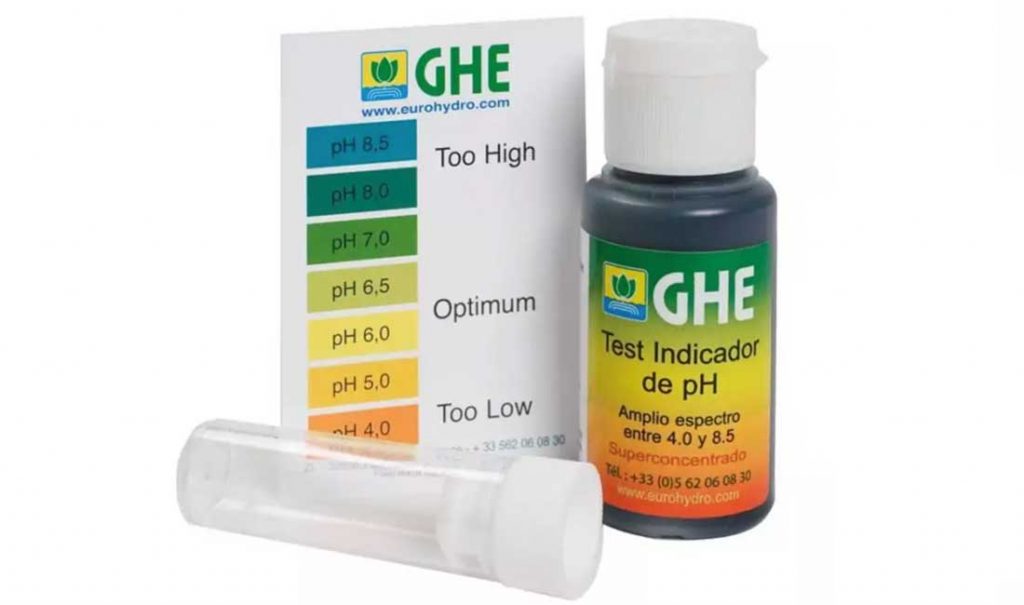
The other option is to use a digital PH meter, this way the measurement is done by microprocessors, which offers much more reliable and accurate results. In our online store you can find a multitude of digital PH meters, all of them from leading brands and at a great price. There are also combined digital meters, with two probes, which measure PH and Ec at the same time, as well as continuous meters, capable of measuring all the time submerged in the water.
Feeding with the perfect PH
The PH is a measure of the acidity or alkalinity of a liquid, in this case of the irrigation water for marijuana plants. PH indicates the concentration of hydronium ions [H3O+] present in it. The acronym stands for Hydrogen Potential, but the most important thing about measuring the PH is that thanks to it, we are able to know the point where the plant absorbs most nutrients efficiently.
This is very important for two reasons. One of them is that without regulating the PH, the plant will not receive the nutrients that we think we are giving it, since the plant it is not able to absorb them because it does not have the right degree of acidity. On the other hand, if the PH is not correct, the nutrients that the plant does not absorb remain in the substrate, degrading and causing salts, which can vary the conditions of the soil and clog the roots of the plant. This table will help you to understand this concept.
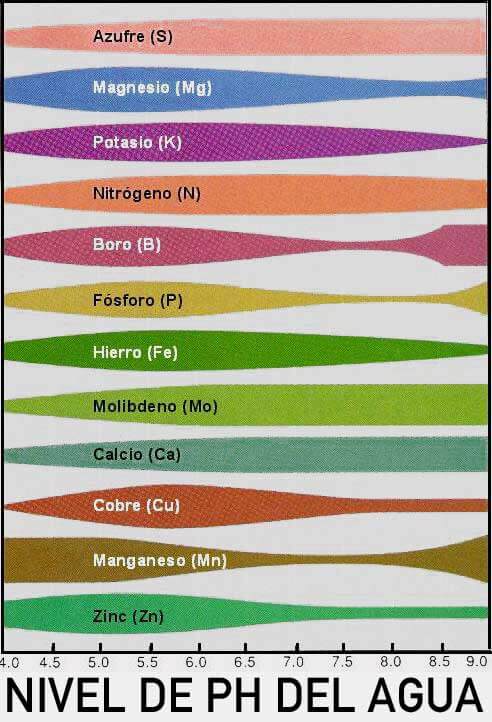
In this table we can see that the PH value where more nutrients are absorbed is between 5 and 7, this data, along with our knowledge about the feeding of marijuana will give us the ability to perfectly nourish a marijuana plant and get the most out of it.
The different elements that plants need are ordered from top to bottom, each of them has a horizontal band of different widths, Sulfur, Magnesium, Nitrogen, etc.. These widths are the level of assimilation of each nutrient according to the pH level, which appears at the bottom of the image in numerical form with a decimal, with a measurement from 4.0 to 9.0. The wider the band, the more nutrient absorption the plant will have, and where it coincides that almost all elements have their maximum absorption capacity, as you can see it is between 5.0 and 7.0, so that is the ideal range to move when we refer to PH for cannabis plants.
Then, to fertilize the plants with the perfect PH you have to take into account 2 things. The first is the type of substrate used, the soil substrate can provide nutrients and therefore work in a different PH than, for example, a coco or hydro substrate. The last important question to take into account with the PH is the growing phase in which the plant is, since it does not need the same nutrients in growth or in bloom phase. Here is a detail of the necessary values according to the type of substrate and the phase in which the plant is.
Optimal PH values
The recommended pH for soil is the one that provides the best absorption of nutrients in this growing medium. Specifically, the optimum pH range for soil cultivation is between 6.0 and 6.8. The lower value is more recommended for the growth phase, while values closer to 6.8 are more suitable for the flowering phase.
The recommended pH for hydroponic cultivation is slightly lower than for soil cultivation. To be exact, the ideal pH range for hydroponic and coco substrate crops is 5.5 to 6.5. As in the previous measure, the lower the value, the more recommended for the growth phase, while higher values close to 6.5 are more suitable for the flowering phase.
How to raise the pH?
In many occasions the PH is not in the optimal values to be able to water the plants, this can come motivated by the quality of the water or by the nutrients that we add to it. Raising the pH can be done in two ways.
We can raise the pH of a nutrient solution with a specific product for this purpose, such as Hesi’s PH+. Just follow the instructions on the bottle, add the product to the water, stir and measure again with the PH meter. In case it is within the right range, you can irrigate with that water, in case you need more product, add a little more, stir and measure again.
It is also possible to increase the PH with some fertilizers, as long as they clearly indicate it or when we have knowledge of having used and measured it before. An expert grower can make an optimized use of the fertilizers and know which one to choose to leave the perfect PH and feed his plants in the most effective way.
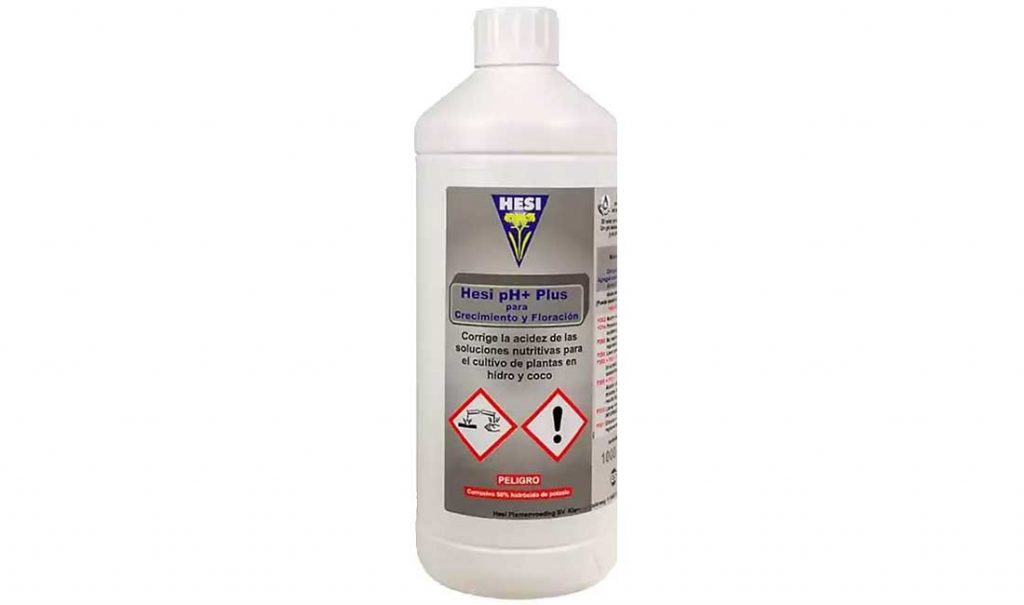
How to lower the pH?
In other occasions the PH is above the optimal values to be able to irrigate, this like a high PH, can be due to the quality of the water or for the nutrients that we add to it. To lower the PH we have two ways too.
We can lower the pH of the water with a specific product, such as Hesi’s PH-. As before, just follow the instructions on the package, add the product to the water, stir and measure again with the PH meter. In case of being within the correct values we can irrigate with that water, in case of needing more product, add more, stir and measure again.
Finally, the PH can also be lowered with a fertilizer, as long as the manufacturer indicates it, or we have enough accumulated experience to know that the product will lower the PH and not raise it.

The Ec, the electroconductivity
And so far with the PH, we give way to the Ec, or also called electroconductivity, this value measures the concentration of solids per cm, or what is the same, the level of dissolved solids in the irrigation water for our marijuana plants. The more fertilizer or residues in the water, the more Ec it will have, the less fertilizer or residues in the water, the less Ec it will have.
The values of Ec can be measured in different units of measurement, usually measured in ms/cm ( millisiemens), although there are also us/cm ( micro), etc. The most common unit of measure for Ec is ppm, which means parts per million.
Thanks to this data we measure the optimal and maximum capacity of the plants to be fed, in the Cannabis it is as maximum in hydroponics from 2.0 to 2.4 without suffering over fertilization, all depending on the moment of the culture and the variety that is being cultivated. While for soil crops the values are significantly lower, since in this type of substrate the plants do not accept so many nutrients. Concretely and as a general rule, cannabis crops in soil should never exceed 2.0 Ec.
The irrigation water has a certain Ec, the fertilizer that we use will have another Ec, so the Ec that reaches the plants will be an average between these two plus a correction that always occurs in the watering and the substrate. In soil it is advisable to use a filter of osmosis to obtain a water with Ec 0.0, this way to be able to add only beneficial nutrients for the plants, in hydroponics this filter is indispensable. When using tap water we will never have water Ec 0.0 because it comes with chlorine and other elements, which are not necessary for the marijuana plant. If you can not invest in a good osmosis filter, at least let the water stand for 24 hours, always in a wide container, before using it, this way some solids will evaporate.
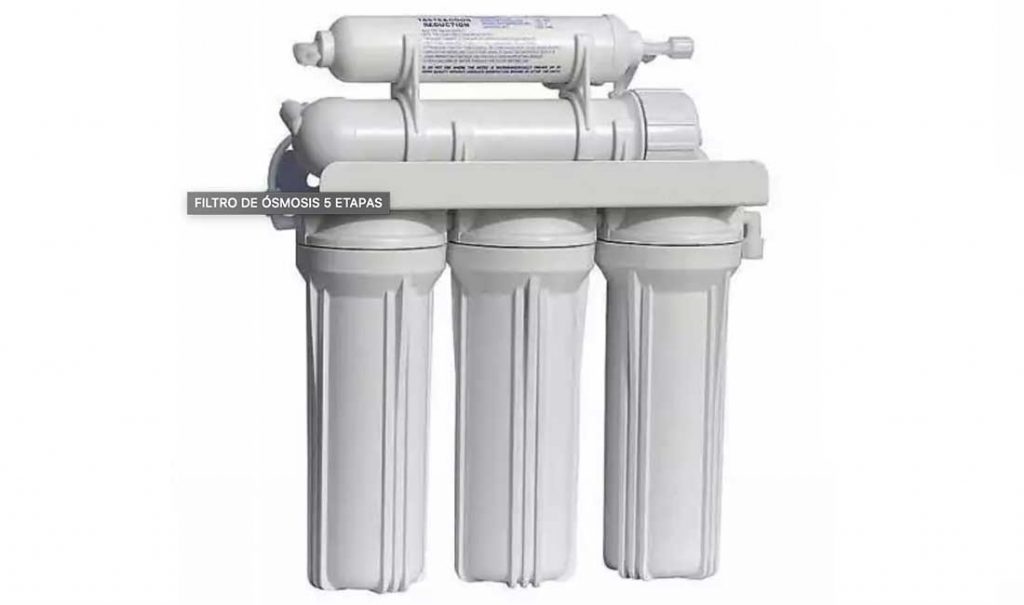
Optimal Ec values
Now we are going to give you the optimal measures of Ec and Ph and some advice to know how to react in every situation, the first one is when the plant eats less at the beginning, and as it grows it assimilates correctly bigger quantities of nutrients, normally the manufacturer of fertilizers gives some fertilizing tables, this way we can know how much amount of fertilizer we can throw to a plant in a certain moment of the culture.
EC between 0 and 0.4: almost clean or full clean water. In these circumstances the plant has hardly any food to feed on.
EC between 0.4 and 0.8: ideal for cuttings. Not enough for growth and flowering. Deficiencies will be shown.
EC between 0.8 and 1.2: good for growth. It has the right food to grow the first weeks in good health, but insufficient for flowering.
EC between 1.2 and 2.0: they are in excess of fertilizer in growth, it is probable that deteriorations derived from the excesses appear. However, for the flowering phase in soil it works well. In hydroponics it is the maximum tolerable for the growth phase.
EC between 2.0 and 2.4: danger! Very problematic in growth, risk of irreparable damage and death of plants. For flowering it is exceeding the limit and can create excesses and problems. In hydroponics it is the maximum tolerable for flowering.
EC of more than 2.4: safe over fertilization. You need to clean the roots and the substrate or the plants will die. In some cases of hydroponics you can reach these values, but only if you know what you are doing.
Once we measure the Ec with a digital meter we are going to get a measurement, with it and the help of the data that we have just provided you will be able to see if you have a correct value, low or high. Then we must correct this value by raising or lowering the Ec before giving it to the plants.
How to lower the Ec?
When the level of electroconductivity of the water is higher than needed, it is necessary to lower it, otherwise it can create very serious problems and the death of the plant. There is only one technique to lower the Ec.
Since Ec is the level of dissolved solids, the only way to lower the Ec is with clean water, that is, water without nutrients or residues in it. Adding more clean water to the nutrient solution lowers the solids concentration because the solids will be dissolved in a larger amount of water.
Adding tap water will lower the Ec level less than using demineralized water because, as the name implies, demineralized water comes without nutrients or residues in it, i.e., water with an Ec of 0.0. This type of water can be purchased bottled or can be obtained with a reverse osmosis filter, and it’s the best for feeding plants or to lower the Ec.
How to raise the Ec?
Otherwise, when the Ec level of the nutrient solution is lower than what is needed, it does not represent such a serious problem, although maintained over time it can also lead to great damage and even the death of the plant. There is only one technique to raise the Ec of the water.
Specifically, the only way to raise the Ec is adding more nutrients, that is to say, to add more fertilizers. Having a lower Ec than recommended for that type and stage of the crop means that we can give more nutrients to the plant. By adding more fertilizer to the nutrient solution, the solids concentration to go up, as the solids will be dissolved in a smaller amount of water.
You can add more fertilizer than we are using, you can also take advantage to add another type of fertilizer, although it must always be done carefully, since different fertilizers produce different Eq changes.
We hope you liked this content on how to measure and control pH and Ec, once you are a master in the control of pH and Ec you can continue to improve by controlling the basic nutrients, visit our article on NPK nutrients: basic elements of marijuana fertilizer.
Founder of Experiencia Natural, creative and entrepreneur, designer, master in grower and marketing. For a normalization of all plants and substances, giving priority to patients and users.







